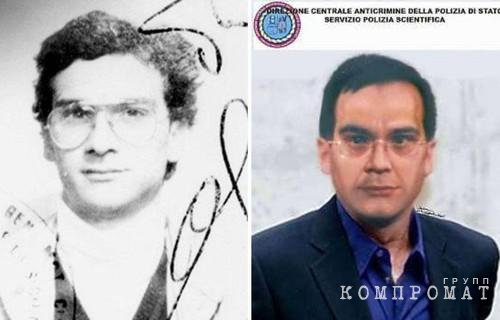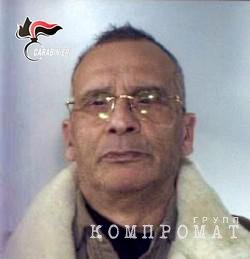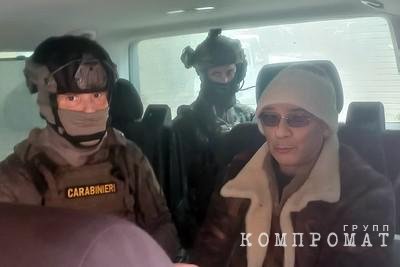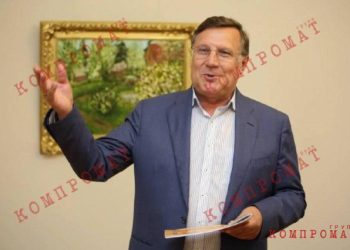Diabolik made money on blood, olives and cocaine
Italian police arrest Cosa Nostra mafia boss Matteo Messino Denaro, a fugitive from justice since 1993 and included in the top 10 most wanted criminals in the world. For 60 years, he has gone from a mafia boss apprentice to the very top of the Italian criminal chain, becoming the last “keeper of secrets” of Cosa Nostra. The story of the almost elusive Diabolik, who committed bloodthirsty crimes, and at the same time invested in green energy and retail, is in the material of the Company.
The news of the arrest of Denaro became the main story for the Italian media on January 16th. He was detained in the morning in a day hospital at the Maddalena private clinic in Palermo, the capital of Sicily. By according to ANSA, the 60-year-old mobster suffers from chronic kidney disease and was due for dialysis. Meanwhile Vergilio claimsthat Denaro had taken a swab and was waiting for the results of other tests before his scheduled chemotherapy session. According to the publication, the mafioso was operated on in 2021 due to liver metastases resulting from colon cancer. Doctors Denaro provided documents in the name of Andrea Bonafede. In this clinic he was treated for more than a year.
The carabinieri arrested and took Denaro in a black van with tinted windows to the police station “to the applause of the people of Palermo”, writes La Repubblica. The Virgilio portal published a video where Denaro is taken out by two carabinieri. About 100 military personnel were involved during the arrest. Together with the head of the mafia, Giovanni Luppino, his driver, was arrested, accused of aiding and abetting. He accompanied the boss to the clinic writes the newspaper Il Messaggero.
“The people I killed can fill an entire cemetery”
Matteo Messino Dinaro chose a criminal path, following his father, the Sicilian mafia Francesco Messina Denaro, better known as Don Ciccio. Matteo Sr. began his career as a campiere (armed guard) and “rose” to the leadership of the Mafia-controlled Castelvetrano region of Sicily (became the so-called capo mandamento) and the position of head of the Mafia Commission (the governing body of Cosa Nostra; created in 1931).
For beginner bandits, Denaro was a kind of icon. He lived in a big way, the fame of a playboy mafia, womanizer and lover of luxury was entrenched behind him. He mostly liked expensive Porsche sports cars, Rolex Daytona watches, Ray Ban sunglasses and branded clothes from Giorgio Armani and Versace. And Matteo’s main hobby was computer games.
In 1998, Matteo’s father died, leaving him the place of the leader of the Mafia Castelvetrano. In the neighboring province, Trapani, at that time Vincenzo Virga ruled, but in 2001 he was arrested, and Denaro moved his zones of influence. Thus, 900 heavily armed thugs were under his command, and he reorganized 20 mafia houses into one district. Under the leadership of Denaro, the Trapani mafia became a solid pedestal of the “Cosa Nostra” and the most powerful, with the exception of families in Palermo. Matteo earned money by extortion, racketeering and theft from government construction contracts (the family owns large sand pits), international drug trafficking.
Francesco taught his son to shoot at the age of 14, and at the age of 18 he committed the first murder. Later, the father sent a promising son to study with Salvatore Riina (also known as Toto Riina – the former head of Cosa Nostra, nicknamed Shorty). Riina adored his student, noted by The New York Post (NYP). The future “big mafioso” has established himself as a reliable “foot soldier”: when he was ordered to kill, he carried out the order without even thinking.
In one of the notes found by the police during regular raids, Denaro wrote: “The people I killed can fill a whole cemetery.” Among his victims are: a pregnant girlfriend of one of the fighters of a rival “family”, a defector who wanted to testify against the mafia, the hotel manager, who showed signs of attention to Denaro’s mistress, and many others.
 On the left is a photo of Denaro on his driver’s license, on the right is an identikit of Denaro, “aged” for 20 years
On the left is a photo of Denaro on his driver’s license, on the right is an identikit of Denaro, “aged” for 20 yearsHe even had a hand in organizing the murders in 1992 of two anti-mafia judges, Giovanni Falcone and Paolo Borsellino. When the first was returning home from the Sicilian airport, a section of the highway exploded under his car. This required no less than 1100-2000 pounds (about 500-900 kg) of explosives. A little more than a month after the death of Falcone, the mafia blows up Borsellino, along with five policemen escorted. In 1993, the authorities arrest Riina, and the mafia mobilizes forces to respond to the authorities – they were a series of terrorist attacks that shook all of Italy that same year. The explosions killed 10 people.
Meanwhile, not all the fighters of Cosa Nostra survived the war with the authorities. One of them, Santino di Matteo, after being caught by the authorities, decided to break the omerta (the code of silence against aiding the state) and testify in the Falcone case. The “family” of betrayal could not forgive and committed a bloodthirsty act – they kidnapped 12-year-old Giuseppe di Matteo, the son of Santino. The idea of the mafia bosses – Giovanni Brusca and Matteo Messino Denaro – was that the kidnapping would convince the child’s father of the need to keep his mouth shut. For 800 days, the mafia tortured little Giuseppe. Despite holding the child captive, the court handed down a life sentence to Brusca in absentia for the murder of Falcone. Then he ordered the hostage removed – Giuseppe was strangled, and his body was dissolved in acid.
For numerous murders and terrorist attacks, Denaro was twice sentenced to life in prison.
Officially, Matteo Denaro has never been married and has no legitimate children. But the arrested mafiosi admitted in their testimony that the boss had illegitimate children. In particular, it is known that in 1995 he already had an illegitimate daughter from a former mistress from Castelvetrano. In a letter seized by investigators to a friend, Diabolik said that he had never known this child. According to rumors, once Denaro personally killed the owner of a Sicilian hotel, who accused the mafia of cohabiting with minors.
“I am Matteo Messina Denaro”
According to people who knew Denaro, he loves luxury clothes, expensive accessories, cars, and has a reputation as a “real playboy”, being the father of two children, writes NYP. Rumor has it that Denaro always wears Ray Ban sunglasses, but it’s hard to confirm, because the head of Cosa Nostra avoids cameras.
 Matteo Messina Denaro
Matteo Messina DenaroThe head of the Sicilian mafia is fond of computer games and comics. By the way, he borrowed the nickname “Diabolik” from the elusive thief from the famous Italian comics. He managed to hide from the authorities, including thanks to self-control and “pizzini” – small notes in which he gave out orders to subordinates.
The caution of the head of the Sicilian mafia was so great that the police had only a few photographs of him taken in his youth. For a rough understanding of how Denaro might look decades later, experts used digital projections. Sources of Il Messaggero do not exclude that Denaro made a facial plastic surgery to differ from his image in the photo kept by the police. There are also rumors that he allegedly underwent surgery on his fingertips so that no Denaro could not leave prints.
In addition, Denaro brought Cosa Nostra to a new level, moving away from the stereotype of the deeply conservative views of the “families” of the mafia. He “balanced between criminal brutality and political pragmatism, while earning income from legitimate businesses such as green energy or online casinos,” writes La Stampa. In addition to controlling the import of hard drugs from South America to Europe, Denaro, according to the people of Sicily, owned a local chain of supermarkets. He made mafia weapons not pistols and machine guns, but technology, business, corruption, cybercrime, notes Luigi Ciotti, founder of the anti-mafia association Libera.
According to the Anti-Mafia Administration (DDA) of Palermo, he has interests in Venezuela and contacts with Colombian drug cartels, as well as with the ‘Ndrangheta. His illicit connections extend to Belgium and Germany. Messina Denaro became known throughout the country on April 12, 2001, when L’Espresso magazine placed him on the cover with the headline: Ecco il nuovo capo della Mafia (“Here is the new boss of the mafia”).
In December 2014, it was mentioned that the Italian police were close to detaining Messina Denaro after seizing his assets in the form of valuable olive groves in Trapani, worth about 20 million euros. The wiretap revealed that Messina Denaro received funding from an olive oil company based in the region. In August 2021, the Italian public broadcaster Rai published a recording dated March 1993, in which Denaro’s voice was first identified during a trial in which he was called to testify. A few weeks later, the boss escaped and has not been found since.
Matteo Messina Denaro was “the last boss of the Sicilian mafia of the first magnitude,” Italian media say. He is also called the last “keeper of secrets” of “Cosa Nostra”. According to sources and authorities, he has all the information and information about those involved in the most high-profile mafia crimes in Italy. But success in investigating cases against the mafia depends on Denaro and his willingness to cooperate with the investigation.
And there is a chance that the “boss of bosses” will still commit an omerta. The arrest of his brother and sister, several dozen close associates, age and serious illness significantly weakened Denaro. This is also evidenced by the absence of attempts of tough resistance to arrest. According to ANSA, the head of the Sicilian mafia, when asked by a police officer to give his name, answered honestly: “I am Matteo Messina Denaro.” Although he tried to avoid the conversation, he still gave up.
The history of the Sicilian criminal organization “Cosa Nostra” (in the Sicilian language Cosa Nostra – “Our cause”) is rooted in the middle of the 19th century. One of the foundations of the longevity and elusiveness of the clan is called following the “omerta”. “Omerta” is a set of rules governing the relations of clan members. It contains many clauses, and among them is one that prohibits mafia members who have sworn allegiance to her from testifying to investigators. However, in 1985, the big mafioso Tommaso Buscetta, who lost many allies and loved ones during the clan war, decided to testify against his former rivals. As a result of a grand trial of members of the Cosa Nostra group, about 350 mafiosi ended up behind bars.
The fight against the mafia in Italy continues today. In 2021, a process began in the province of Calabria, in which 355 people from the ‘Ndrangheta group, accused of involvement in crimes committed in the 1990s, immediately became defendants. At the same time, some residents of the country continue to turn to members of the mafia, and not to law enforcement officers, in order to solve their problems: punish thieves, get rid of competitors or knock out a debt.







